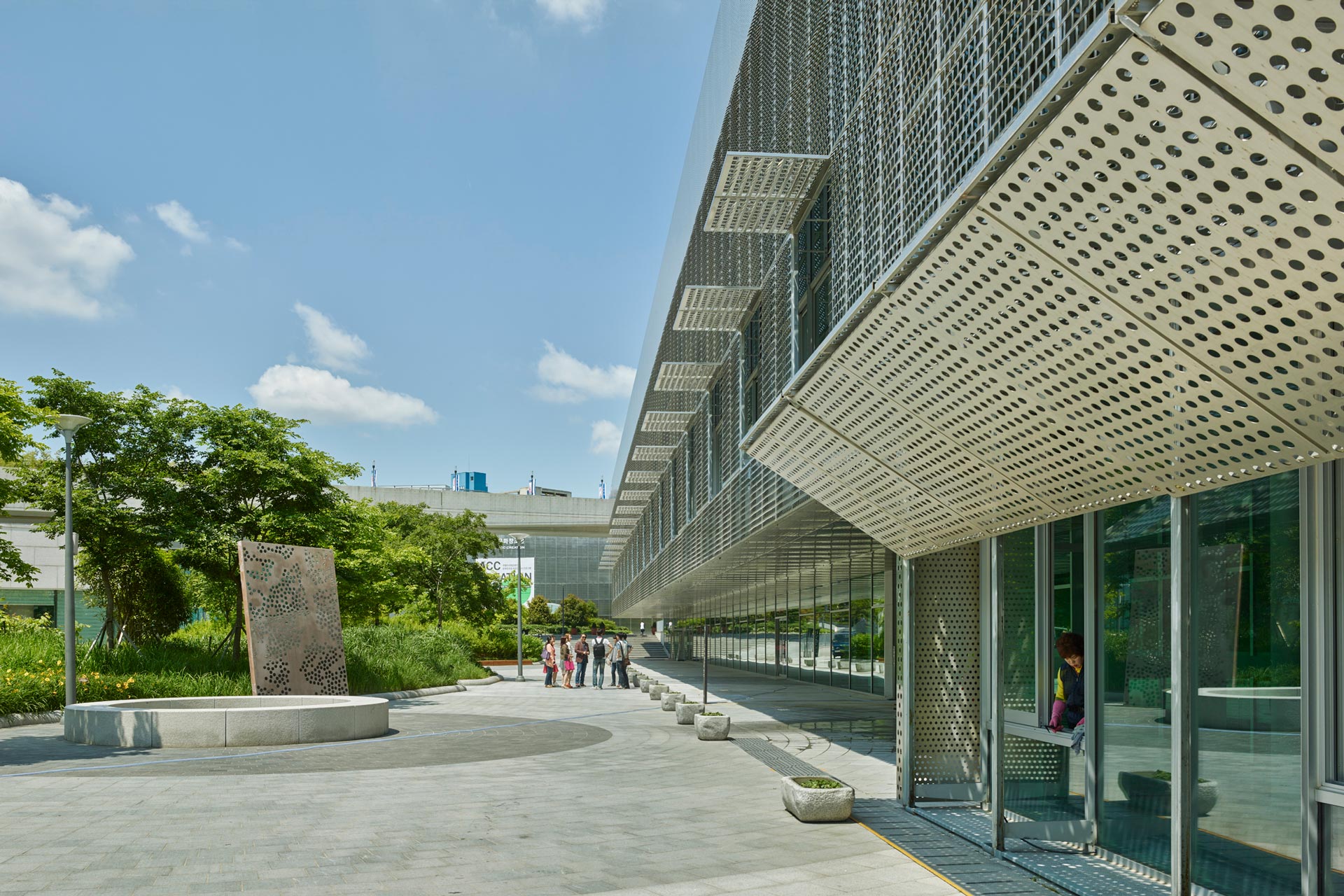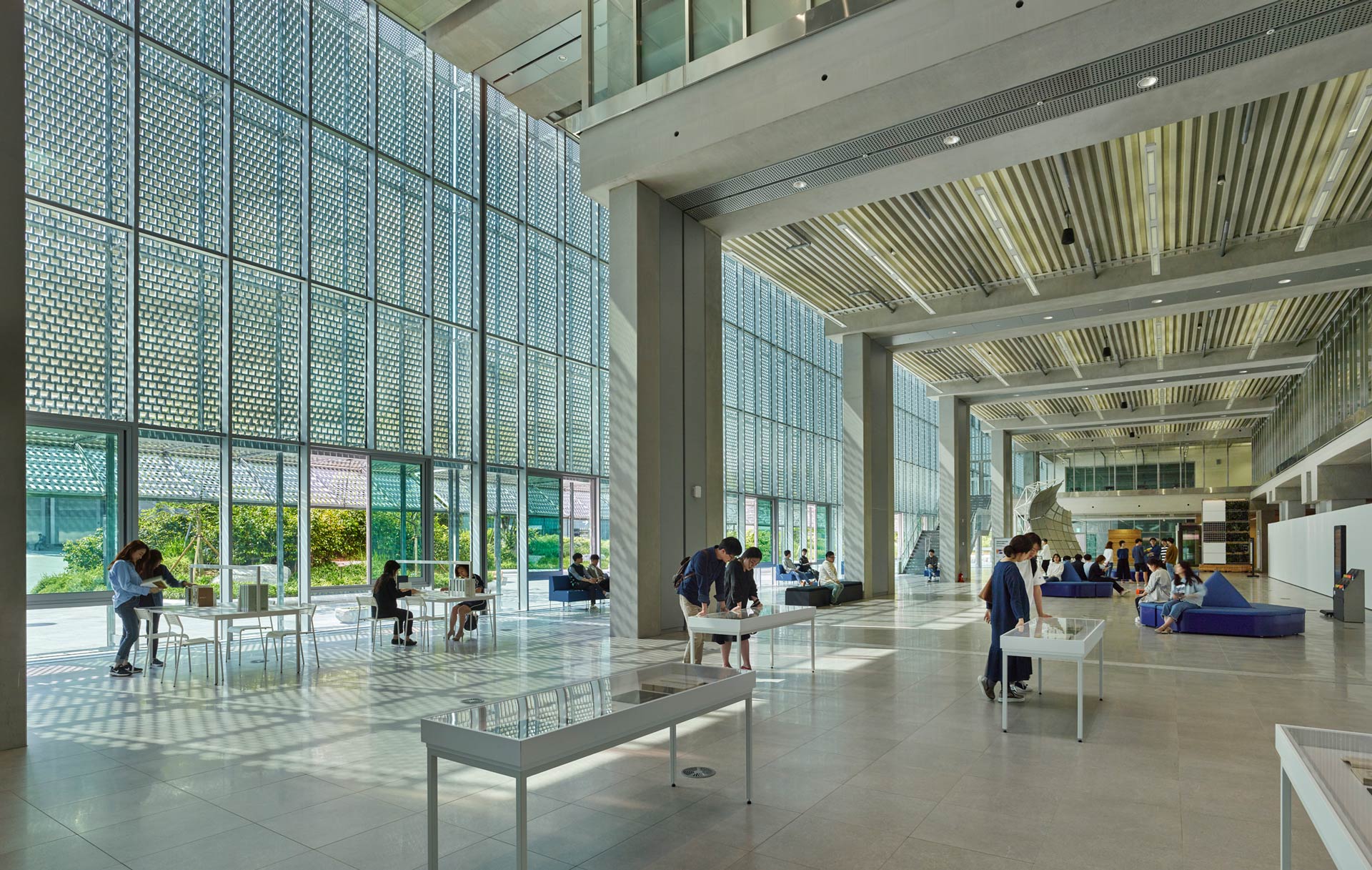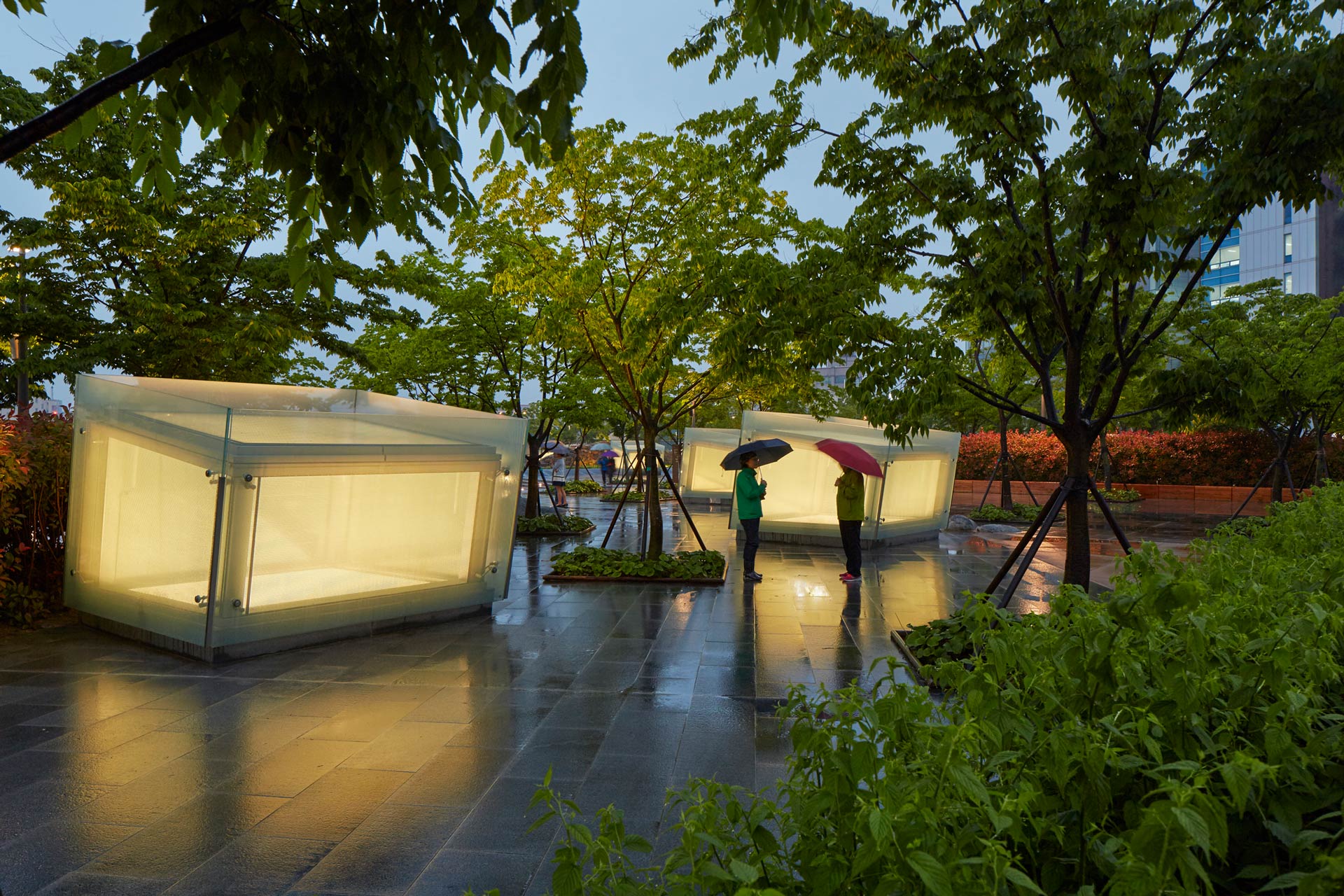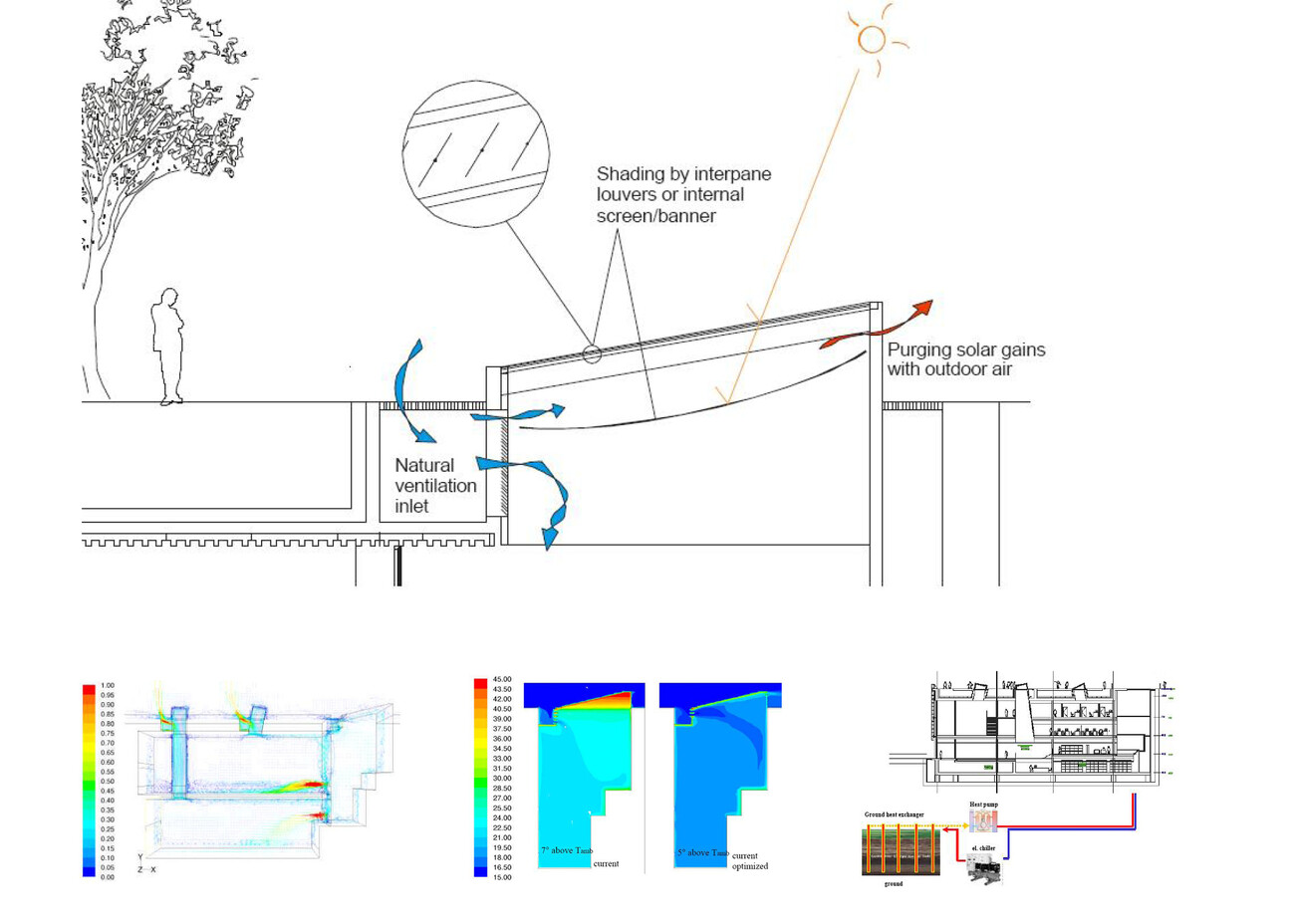ACC Asian Cultural Center, Gwangju, South Korea
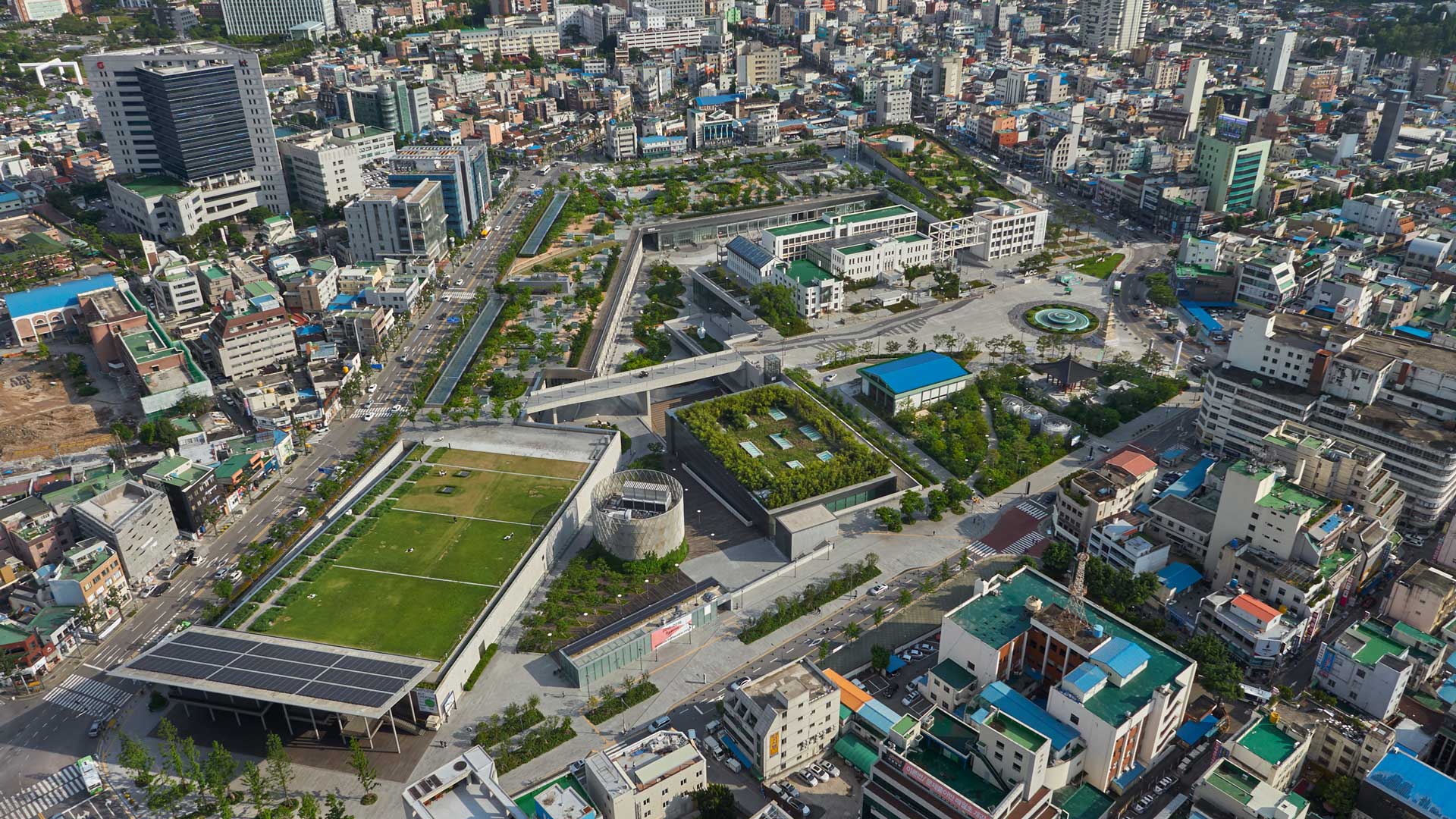
The architecural concept is a sunken plaza close to the National Monument in the heart of the city. The adjoining buildings carry museum facilities, libraries, theater, workshop and retail area. The maximization of natural daylight supply and natural ventilation were the main drivers of the design. Roof skylights and light tubes bring daylight to lower building levels.
The climate and energy concept employs an array of active systems in close integration with architectural form and material. The benefits of the system include not only superior environmental quality and energy efficiency, but reductions in space requirements and maintenance associated with typical, more extensive mechanical systems.
The following strategies support the concept. Great importance was given to airtightness of the highly insulated building envelope. Operable sunshades are installed on the outside. Highly efficient systems in the skylights direct plenty of daylight to the lower floors. Buffer zones decouple the rooms from the outside climate and serve to collect exhaust air.
Heating and cooling are provided by building component activation, which uses geothermal energy as source. For peak loads and electricity, cogeneration is used.
Natural ventilation is possible for about half of a year. Low-pressure distribution was considered for the mechanical ventilation systems with heat recovery. The air volumes are designed for the hygienically required values. Displacement ventilation ensures comfort. Passive and active measures improve outdoor comfort.

